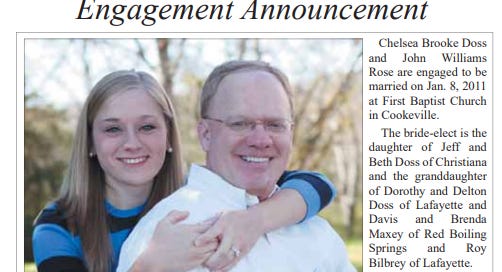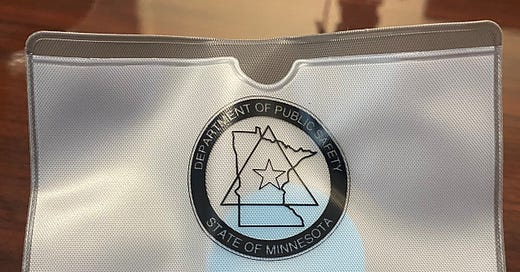NYT gives 'water witches' the both-sides treatment
Belief in 'dowsing' refuses to die, and the press bears much of the blame
Just so we’re clear: “dowsing” — the act of using a stick or rod like an antenna to divine the location of underground water and other hidden things — is pseudoscientific nonsense. The very notion of dowsing — that an above-ground stick will react to the presence of something hundreds of feet below — breaks the laws of physics. Every single controlled test of the practice has failed, yielding results indistinguishable from chance.
The case against dowsing is so conclusive that over a century ago the U.S. Geological Survey officially shut the book on the practice, stating that “it is difficult to see how for practical purposes the entire matter could be more thoroughly discredited, and it should be obvious to everyone that further tests by the United States Geological Survey of this so-called ‘witching’ for water, oil, or other minerals would be a misuse of public funds.”
A British company once developed and sold a bomb dowsing device for locating roadside munitions. It was eventually blamed for hundreds of deaths. Adam Savage, of Mythbusters fame, recently said that the show never bothered to debunk water dowsing because they didn’t want to expose people as charlatans on national television.
Nevertheless, dowsing persists. At a time of near-record drought across the American West, desperate farmers and landowners appear to be turning to ‘water witches’ for help locating well sites. There are a lot of ways to cover this story. You could frame it by asking why people continue to believe in the practice, despite the overwhelming empirical evidence against it. You could situate dowsing within the broader context of rising misinformation and conspiracy-mongering in the U.S. At the very least you could make it clear — without equivocation — that dowsing is a pseudoscience no different from Ouija board divination or telepathy.
Alas, in its recent story on dowsing in California the New York Times did none of those things. It described dowsing as a “disputed method for locating water,” as if it were a topic of political debate rather than a claim about objective reality. It gave dowsers a platform to spread misinformation at length — one described how the “energy around him changes,” boasted of laughing at critics “who don’t know the facts” and claimed he was “rarely wrong” — without being challenged.
The story gave the strong impression that dowsing is a valid economical alternative to scientific well-digging methods: “Mr. Thompson, shades down, divining rods in hand, maintained a cool demeanor. He planned to charge at least $1,400 for his visit. A geologist had quoted the same site at a minimum of $6,500.”
It relegated scientists’ perspectives to curt paragraphs hedged with distancing language: “It was possible, Mr. Parker and other experts said, that witches got lucky, because it is not hard to find water in many parts of California.” Indeed, it is not hard to find water in many parts of most places, which is the actual reason why dowsing so often appears to ‘work.’
“In a region of adequate rainfall and favorable geology, it is difficult not to drill and find water,” the USGS explains.
The story, in short, confers the legitimacy of a lengthy profile in a leading national newspaper upon a community of pseudoscience practitioners. The both-sides framework puts dowsers and scientists on the same empirical footing — “dowsers say X, but scientists say Y” — undermining decades of legitimate work by the latter, and implying that the scientific method of understanding the world is no more or less valid than the hunch of a guy spouting nonsense about the energy swirling around him and his rod. The article will doubtless become a potent marketing tool for dowsers hoping to sell skeptical landowners on their ‘services’ going forward.
Only a few months ago the Times asked “how to save ourselves from disinformation.” A reasonable first step would be to stop running disinformation in the Times.
The problem, unfortunately, is much bigger than the Grey Lady: the press has been running indulgent pieces on dowsers for decades. In 2014 the AP ran a similar story on dowsing in California, which contained some perfunctory noises of disapproval from scientists but gave the literal last word to a winery owner who claimed that “the witchers do the better job than the guys with all the electrical equipment. I believe in them.” Earlier this year the Connecticut Post ran a credulous profile on a guy who claims he uses his sticks to track “dinosaur bones, bodies lost in lakes, lost pets, missing stones from engagement rings, [and] holes in pipes creating underground leaks.”
Outside Magazine let a dowser ramble at length, without pushback, about portals to other dimensions. An ABC station in the Bay Area recently profiled the same guy featured in the New York Times article (congrats to his publicist, I guess), took his claims at face value, and concluded that if his “track record is a guide, you can believe it.” In 2015, the Great Falls Tribune in Helena, Montana authoritatively stated — in the business section, no less — that dowsing is “an affirmed practice for those who possess the ability to tap into this unseen energy.”
With coverage like this, it’s little wonder why belief in dowsing persists.
Five or ten years ago it might have been easy to look at it all and conclude there’s little harm to it. It makes for colorful copy that you can leaven with appropriate bits of skepticism where required: maybe a passing reference to the scientific consensus is all you need when trust in scientists is high.
But we live in a different world now. The “both sides” model of journalism is being exploited by bad actors intent on spreading misinformation and conspiracy theories. “If the weight of the evidence allows you to make a judgment, but instead you go with ‘he said, she said,’ you're behaving recklessly even as you tell yourself you're doing the cautious thing,” as press critic Jay Rosen notes. Mistrust of scientists and journalists is being fostered and weaponized by those same actors in pursuit of their political goals.
If readers don’t need to believe the experts when it comes to ‘water warlocks,’ then why should they trust the scientific consensus on things like global warming, vaccines, the size of Donald Trump’s inauguration crowd, or the reality of what actually happened in the Capitol on January 6?
Or, to frame it a different way: if a media outlet can’t do the bare minimum of calling unequivocal bullshit on magic sticks, how can we expect it to defend the truth when it really matters — like when democracy is under assault by a political movement built on lies and conspiracies?
Subscribe to The Why Axis
Making data fun again













Great. As always, not only do we need to tell the truth, we need to do the right thing!
I am so glad I signed up for this. Thank you! Here’s to direct, truthful reporting and writing that calls bullshit when warranted, and teaches me something every time.